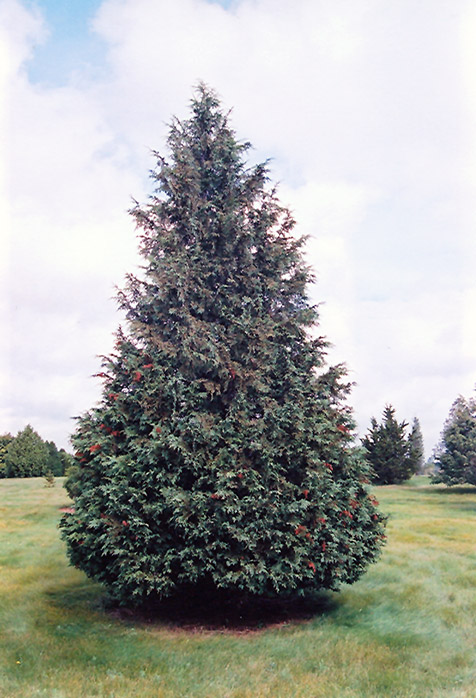Blue Nootka Cypress
Chamaecyparis nootkatensis 'Glauca'
Height: 40 feet
Spread: 20 feet
Sunlight:
![]()
![]()
Hardiness Zone: 4b
Other Names: Alaska Cedar, Nootka Falsecypress, Xanthocyparis
Description:
A tall, narrow evergreen with pendulous branches, giving an overall graceful appearance, foliage is a richer blue than the species; a common native west coast tree, ideal for general landscape applications in moist, rainy conditions, but very adaptable
Ornamental Features
Blue Nootka Cypress is primarily valued in the landscape for its distinctively pyramidal habit of growth. It has blue evergreen foliage. The scale-like sprays of foliage remain blue throughout the winter. The shaggy antique red bark adds an interesting dimension to the landscape.
Landscape Attributes
Blue Nootka Cypress is an open evergreen tree with a strong central leader and a distinctive and refined pyramidal form. Its average texture blends into the landscape, but can be balanced by one or two finer or coarser trees or shrubs for an effective composition.
This is a relatively low maintenance tree. When pruning is necessary, it is recommended to only trim back the new growth of the current season, other than to remove any dieback. It has no significant negative characteristics.
Blue Nootka Cypress is recommended for the following landscape applications;
- Accent
- Vertical Accent
Planting & Growing
Blue Nootka Cypress will grow to be about 40 feet tall at maturity, with a spread of 20 feet. It has a low canopy with a typical clearance of 3 feet from the ground, and should not be planted underneath power lines. It grows at a medium rate, and under ideal conditions can be expected to live for 70 years or more.
This tree does best in full sun to partial shade. It prefers to grow in average to moist conditions, and shouldn't be allowed to dry out. It is not particular as to soil type or pH. It is quite intolerant of urban pollution, therefore inner city or urban streetside plantings are best avoided, and will benefit from being planted in a relatively sheltered location. Consider applying a thick mulch around the root zone in winter to protect it in exposed locations or colder microclimates. This is a selection of a native North American species.







